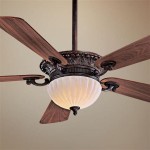How To Update Ceiling Tiles
Updating ceiling tiles can significantly improve the aesthetics and functionality of a room. Whether aiming to repair damaged tiles, modernize the appearance, or enhance insulation and soundproofing, understanding the process is crucial for a successful upgrade. This article provides a comprehensive guide on how to update ceiling tiles, covering various aspects from preparation to installation.
Assessing the Existing Ceiling and Identifying the Need for an Update
Before undertaking any work, a thorough assessment of the existing ceiling is necessary. This involves inspecting the current tiles for damage such as water stains, cracks, sagging, or mold growth. Identifying the root cause of any damage, especially water leaks, is paramount. Addressing the underlying issue prevents recurrence of the problem after the new tiles are installed. The type of ceiling grid system in place should also be noted, as this will influence the selection of replacement tiles and the installation process. Different grid systems may require specific tile sizes and installation methods. Documenting the dimensions of the existing tiles is essential for purchasing replacements that fit correctly.
Consideration should be given to the age and condition of the grid itself. If the grid is rusted, bent, or otherwise damaged, it may be necessary to replace it along with the tiles to ensure a stable and aesthetically pleasing ceiling. The presence of asbestos in older tiles is a significant concern that requires professional assessment and abatement. Disturbing asbestos-containing materials can release harmful fibers into the air, posing a serious health risk. If asbestos is suspected, consulting with a qualified asbestos abatement professional is mandatory.
Beyond damage, the aesthetic appeal of the current ceiling should be evaluated. Outdated or visually unappealing tiles can detract from the overall look of a room. Modernizing the ceiling with updated tile designs, textures, or colors can dramatically improve the room's ambiance. Furthermore, if the room suffers from poor acoustics or inadequate insulation, upgrading to specialized acoustic or insulated ceiling tiles can provide functional benefits in addition to aesthetic improvements. Consider the intended use of the room when selecting replacement tiles. For example, a home theater would benefit from acoustic tiles, while a bathroom might require moisture-resistant tiles.
Preparing the Workspace and Selecting Appropriate Materials
Adequate preparation is crucial for a smooth and efficient tile update project. This begins with clearing the workspace by removing furniture and protecting the floor with drop cloths or plastic sheeting. Proper ventilation is also essential, especially when working with adhesives or paints. Opening windows or using a fan can help to dissipate fumes and dust. It is advisable to wear appropriate personal protective equipment (PPE), including safety glasses, a dust mask, and gloves, to protect against potential hazards during the removal and installation process.
Selecting the right materials is equally important. Replacement tiles should be chosen based on factors such as size, material, design, and intended function. Common types of ceiling tiles include mineral fiber, fiberglass, and gypsum. Mineral fiber tiles are a popular choice due to their affordability and sound-absorbing properties. Fiberglass tiles offer excellent thermal and acoustic performance, while gypsum tiles are known for their fire resistance. When choosing tiles, ensure they are compatible with the existing grid system. Some tiles are designed to be installed in a standard 2x2 or 2x4 grid, while others may require a specialized suspension system.
In addition to the tiles themselves, other necessary materials include a utility knife or scoring tool for cutting tiles, a measuring tape for accurate measurements, a level for ensuring proper alignment, and adhesive or fasteners as required by the tile type. If painting the tiles, select a high-quality primer and paint formulated for use on ceiling tiles. Consider using a paint sprayer for a more even and professional finish. For repairing minor damage to the grid, items such as wire, pliers, and rust-inhibiting paint might be necessary. Make sure to have sufficient lighting to see the ceiling clearly while working.
Removing Existing Tiles and Preparing the Grid
The process of removing existing ceiling tiles typically involves carefully lifting each tile and tilting it slightly to disengage it from the grid. It is important to avoid damaging the grid during removal. If tiles are stuck or difficult to remove, gently use a putty knife or similar tool to loosen them. Exercise caution when handling old tiles, especially if they are suspected of containing asbestos. In such cases, the tiles should be wetted down to minimize dust and disposed of according to local regulations for hazardous waste. Proper disposal methods prevent the release of asbestos fibers into the environment.
Once the tiles are removed, inspect the grid for any damage or corrosion. Clean the grid using a damp cloth and mild detergent to remove dust and debris. Repair any minor damage to the grid, such as bent or broken clips, using pliers and wire. If the grid is significantly corroded, consider applying a rust-inhibiting paint to prolong its lifespan. Ensure that the grid is level and properly aligned before installing the new tiles. Use a level to check the grid sections and make any necessary adjustments to the suspension wires or clips.
If the project involves replacing the entire grid system, follow the manufacturer's instructions for installation. Typically, this involves suspending the grid from the ceiling using wires or hangers, ensuring that the grid is level and properly spaced. Pay close attention to the grid layout to ensure that the tiles will fit correctly. Consider adding insulation above the tiles if desired, as this can improve energy efficiency and soundproofing. Fiberglass batts or rigid foam insulation can be used for this purpose. Secure the insulation properly to prevent it from falling onto the tiles.
Installing the New Ceiling Tiles
The installation of new ceiling tiles is generally a straightforward process. Begin by carefully lifting each tile and placing it into the grid opening. Ensure that the tile is properly aligned and seated in the grid. If necessary, adjust the tile slightly to achieve a perfect fit. For tiles that require adhesive, apply a thin layer of construction adhesive to the back of the tile before placing it in the grid. Follow the manufacturer's recommendations for adhesive application and drying time.
When cutting tiles to fit around edges or fixtures, use a utility knife or scoring tool to make precise cuts. Measure the required dimensions accurately and mark the cutting lines on the tile. Score the tile along the cutting lines several times before snapping it along the score. For more intricate cuts, a jigsaw or oscillating tool may be necessary. Always wear safety glasses when cutting tiles to protect your eyes from debris.
After installing all of the tiles, inspect the ceiling to ensure that all tiles are properly aligned and seated in the grid. Clean any dust or debris from the tiles using a soft cloth. If painting the tiles, apply a primer and paint according to the manufacturer's instructions. Use a paint sprayer for a more even and professional finish. Allow the paint to dry completely before replacing any furniture or other items in the room.
Addressing Specific Challenges and Considerations
Certain challenges may arise during the ceiling tile update process. One common issue is dealing with obstructions such as pipes, ducts, or light fixtures. In these cases, it may be necessary to cut the tiles to fit around the obstructions. Measure the dimensions of the obstruction carefully and transfer the measurements to the tile. Use a utility knife or jigsaw to cut the tile to the required shape. Consider using trim or molding to conceal the edges of the cut tiles.
Another challenge is dealing with uneven or sagging ceilings. In these cases, it may be necessary to adjust the suspension wires or clips to level the grid. Use a level to check the grid sections and make any necessary adjustments. If the ceiling is severely uneven, it may be necessary to install a new grid system that is designed to accommodate uneven surfaces. Consult with a professional contractor if you are unsure how to address these issues.
Finally, consider the environmental impact of the materials used in the ceiling tile update project. Choose tiles that are made from recycled materials or that are sustainably sourced. Dispose of old tiles properly according to local regulations. Consider donating reusable tiles to a local charity or organization. By taking these steps, it is possible to minimize the environmental impact of the project and create a more sustainable living space.

Diy How To Update Old Ceiling Tile Pink Little Notebookpink Notebook

Drop Ceiling Update Ceilings Armstrong Residential

Diy How To Update Old Ceiling Tile Pink Little Notebookpink Notebook

Diy How To Update Old Ceiling Tile Pink Little Notebookpink Notebook

How Can I Quickly Update Ceiling Tiles In An Older Home Hometalk

Diy How To Update Old Ceiling Tile Pink Little Notebookpink Notebook

How To Update An Ugly Ceiling Hometalk

Diy How To Update Old Ceiling Tile Pink Little Notebookpink Notebook

Wallpapered Drop Ceiling Update Ceilings With Peel And Stick Wallpaper

Updating An Old Ceiling Ceilings Armstrong Residential








